Floor Bed
Update: about three months after Emma started crawling, we bought her Pack ‘n Play type of crib. That decision took us about 2.5 months too long.
We moved into a two bedroom apartment a few months ago. Prior to that, Rachel and I had been sharing a bedroom with Emma, who either slept with us in our bed1, or in a bassinet next to it (but mostly the former).
Once we got a second bedroom, we did what 99.9% of American parents do and got ourselves a crib. More accurately, Rachel’s parents kindly purchased one for us at a yard sale (cribs seem far too expensive and ubiquitous to purchase new), drove it nine hours from Buffalo to Chicago, then assembled it for us in Emma’s room.
For months we had dreamed of the day when Emma would have her own room (or rather, when we would have our own room). But once that day arrived and her crib was finally set up, there were a few things that didn’t feel quite right.
For starters, after months of having Emma right there next to us, putting her into a crib felt a lot like putting her into prison:
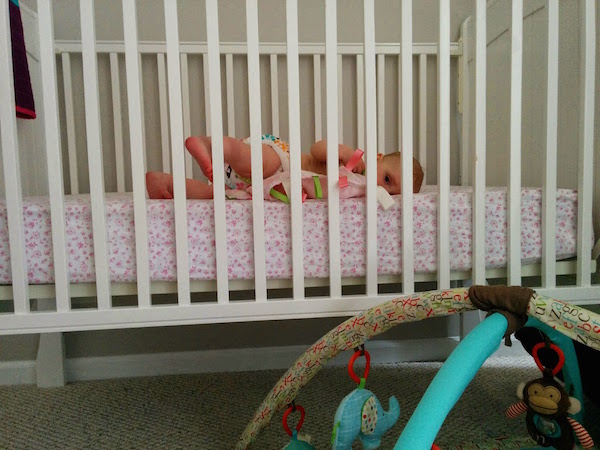
Second, co-sleeping allowed Rachel to feed Emma lying down while they were both semi-conscious. Instead of the fluid transitions they had gotten used to, the crib installed a barrier of demarcation between “time with mommy” and “time to sleep.”
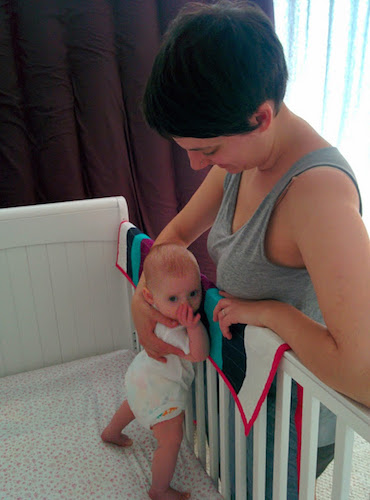
Third, we’ve adopted a fairly minimalistic approach to parenting given the space constraints of living in the city. When the crib started taking up half of an already small bedroom, we asked, “if the primary purpose of this thing is to keep the baby from falling to the floor, why don’t we just put her on the floor?”
Our friend Dawn put us onto this great article about Montessori “floor beds” – a fancy way of saying “take the mattress out of the crib, put it on the floor, then get rid of the crib.”
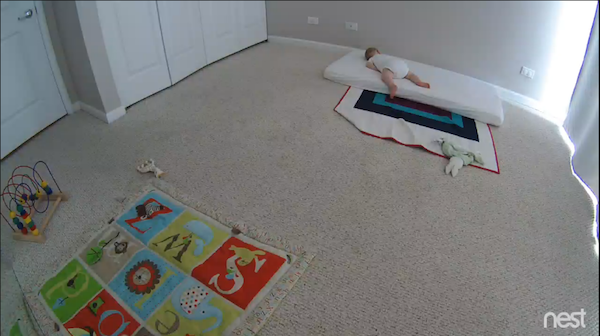
Actually, it’s not quite that simple since a floor bed requires you to super baby-proof the room so that the kid can roam free in your absence. But once you’ve created a safe environment to explore, the theory is that a floor bed fosters independence since the child can wake up, play with their toys, and generally entertain themselves without you.
This certainly seems to be Emma’s case:
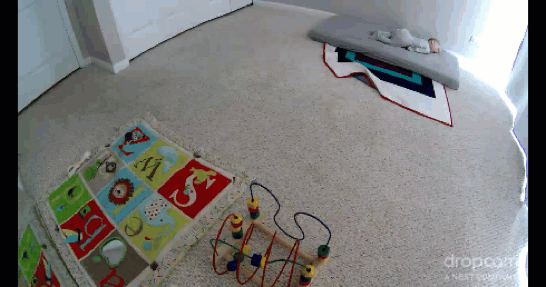
Now, I don’t know if Emma is any more likely to start her own company because she spent the ages of 6 to 18 months sleeping on the floor, but I do know that the extra time between waking and crying affords us 15 more minutes of sleep, and that’s all the justification I really need.
Other pragmatic benefits include: increased snuggles, a far less cluttered room, a far less strained back, and a place to rest my head at 6am.
Freedom, of course, is not without its drawbacks.
We no longer have the assistance of boredom to put Emma to sleep. She’s often playing in the middle of her room five minutes after we walk out. We’ve also bopped her head once or thrice opening the door because she chased after us, then passed out in the doorway. When she does try to crawl back to her bed after her adventures, she often only makes it halfway up, prompting several anxious conversations on the topic of “Is it safe for her to sleep like that?”
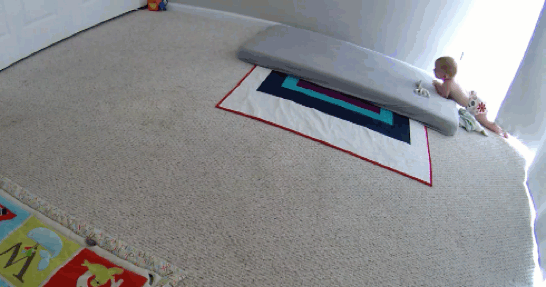
(Pretty sure it’s okay since her body is currently composed of 85% Jell-O.)
It’s been a pretty fun and successful experiment, though it’s not something we’d prescribe to all new parents. It’s easy to imagine that if Emma’s temperament, or our temperaments, were slightly different then we’d have a much different outcome. But so far, we’ve been super happy with our cribless baby room.